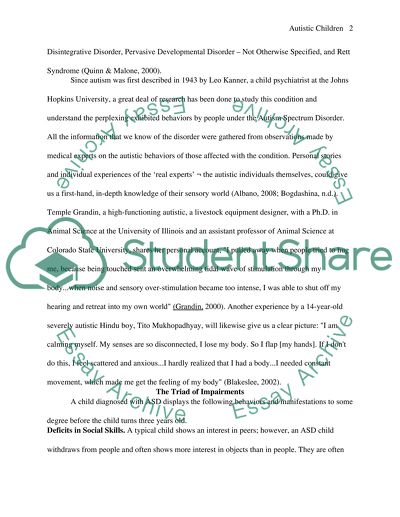Cite this document
(“Autistic Children and How They Experience the World Research Paper”, n.d.)
Autistic Children and How They Experience the World Research Paper. Retrieved from https://studentshare.org/psychology/1443312-autistic-children-and-how-they-experience-the-world
Autistic Children and How They Experience the World Research Paper. Retrieved from https://studentshare.org/psychology/1443312-autistic-children-and-how-they-experience-the-world
(Autistic Children and How They Experience the World Research Paper)
Autistic Children and How They Experience the World Research Paper. https://studentshare.org/psychology/1443312-autistic-children-and-how-they-experience-the-world.
Autistic Children and How They Experience the World Research Paper. https://studentshare.org/psychology/1443312-autistic-children-and-how-they-experience-the-world.
“Autistic Children and How They Experience the World Research Paper”, n.d. https://studentshare.org/psychology/1443312-autistic-children-and-how-they-experience-the-world.


